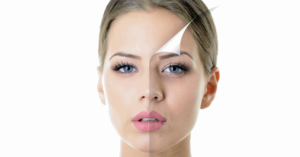Scrub, scrub and peeling. What are the differences, which are the most used and the zero invasive ones

The skin is an organ in continuous evolution: every day 3-4 grams of dead cells are eliminated, continuously replaced by new cells that are born in the deepest layer of the epidermis.
Summer is approaching and it is the ideal time to start preparing the face and body for sun exposure to make the skin as smooth, uniform and radiant as possible.
But with which product, with which treatment? Let’s find out the differences between scrub, peeling and scrub so that you can choose the best solution for your needs.
Exfoliating creams for the face, also called scrub , but usually indicated for the body to smooth the roughness of the knees, elbows, heels, contain natural abrasive microgranules which, generally, have no particular contraindications. However, before proceeding with the application, it is necessary to make sure that they are not formulated with substances to which you may be allergic or in any case hypersensitive.
The gommage , unlike the scrub, exfoliates with greater delicacy thanks to a moisturizing base, made up of nourishing vegetable creams or oils. As with scrubs, the exfoliating action is mechanical: massaging the skin with the product removes the most superficial layer of dead cells that cover the epidermis. You just have to be careful in case of couperose or skin irritation, an abrasive massage would only make the situation worse.
The peelings , on the other hand, exploit the properties of some substances, such as alpha and beta-hydroxy acids, including glycolic acid, to accelerate the natural turnover of the skin and thus generate new and vital cells. They can be divided into light, medium and deep, depending on the substance used and the level of penetration to be obtained. Only the “mild” ones are recommended, therefore with a low concentration of active ingredients, which can be easily performed alone. All the others are of medical relevance, also because they can have contraindications. One above all, skin spots. It is therefore better to rely on a specialist.
The chemical peeling (from the English verb to peel, to peel) is a treatment that accelerates this cell renewal: the application of a chemical agent on the skin stimulates its exfoliation and the speed of regeneration.
It is the perfect treatment for those who want to reduce skin surface irregularities (such as superficial wrinkles and acne scars), skin spots of various origins, active acne. It is also indicated in all those who want to restore brightness and smoothness to the skin put to the test by stress, pollution, aging. It consists of applying a solution containing one or more chemical agents (glycolic acid, salicylic acid, trichloroacetic acid -TCA-) to the skin, using a brush or a cotton bud.
The duration of the treatment is variable (usually a few minutes) and depends on both the characteristics of the patient and the product used. At the end of the procedure a soothing cream is applied and the patient is advised not to expose himself to sunlight. The treatment cycle includes 3-4 sessions at intervals of about 20 days.
Differences and similarities : we can therefore define that scrubs and scrubs are quite similar because they use the same exfoliating formula through the micro granules contained in the product and that the substantial difference lies mainly in the intensity of the treatment. The peeling, on the other hand, does not exploit the abrasive action but on the chemical action through cell renewal.
Tips on exfoliation : for both peeling, scrub and scrub, the rule is not to be exposed to the sun immediately after exfoliation to avoid erythema, irritation and burns. Always apply the moisturizer regularly, which will penetrate deeper thanks to the removal of dead cells in the superficial layer of the skin. A secret? Did you know that anti-cellulite cream works better after exfoliation?

